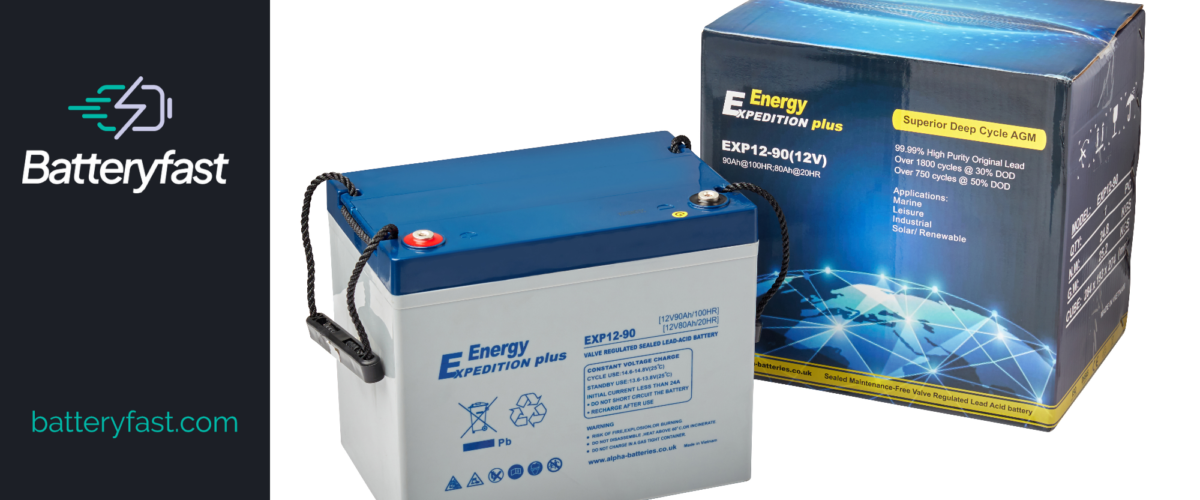It’s virtually impossible to manage most of the simplest activities without power. Even the 150,000 people who currently live off-grid in the UK use alternative sources of electricity, most commonly with solar panels.
A leisure battery is essential for people who live in non-conventional homes as well as the two million who regularly take caravan holidays. Although most campsites offer mains supplies, these are generally not a practical solution for all caravan dwellers, which is why leisure batteries are so important. Here we answer some of the most frequently asked questions about leisure batteries.
What Does a Leisure Battery Do?
Unlike a car battery, which is designed to operate on full power in very short bursts, a leisure battery powers all the appliances in a caravan or motorhome over extended periods. It provides a 12v supply from which you can run lights, televisions and kitchen equipment.
What Are the Different Leisure Battery Classes?
There are three categories of leisure battery, defined by the National Caravan Council.
Category A has high storage capacity for use when access to electrical hook-ups is limited. Category B is ideal for high usage when hook-ups are more readily available, while Category C has a lower capacity for use with essential equipment over shorter periods.
What Leisure Battery Do I Need?
It depends on several factors. First of all, you should work out how many items you need to run from your battery, including those which need constant power and those you use only intermittently. You also need to consider the environment in which you’ll be using it. How easy is it to find a charging point? If you can’t charge it regularly, then you’ll want one with a high storage capacity.
The most commonly used types are lead-acid batteries which are available in three types. Standard starter batteries, or cranking batteries, are suitable for use in mobile homes with a high energy requirement. Standard leisure batteries, or deep cycling batteries, are the most widespread. Another kind of deep-cycling battery is the semi-traction or traction battery, which provides a higher number of cycles and is ideal if you need power over longer periods.
Other types include gel batteries, originally used in quad bikes and jet skis because they eliminate the chance of corrosive acid leaking from the battery, these are now found in imported caravans. Absorbent Glass Mat batteries, although relatively expensive, last longer than lead-acid models, while maintenance-free batteries are convenient, but because they have sealed units, you can’t top them up.
How Should I Charge a Leisure Battery?
You may find conflicting advice on this subject. Some will tell you to keep the battery charged up as often as possible, but we’ve found that charging before it becomes necessary can shorten its life. You shouldn’t let it go completely flat but we don’t recommend recharging it until the charge it holds drops below 50%. You can judge its status by the voltmeter reading. If this shows a charge of 12.7v or more, then it is at 100%, while 12.4v represents a 50% charge. At 12.2v there is only about 25% remaining, so you should definitely charge it as soon as possible. A reading of just 12v or below means it is discharged.
When the time comes, you should remove the battery and connect it to a charger which can provide at least 10% of the battery’s total capacity.
How Many Leisure Batteries Do I Need?
Charging should be done slowly and depending on the battery type and the amount of power remaining, it could take a day or two. For this reason, it’s a good idea to have a second battery as a backup. This isn’t essential, but you’ll find it very convenient.
How Long Do Leisure Batteries Last?
Like all rechargeable batteries, their capacity to receive and hold a charge declines over time. There are a number of things you can do to prolong the life of your battery, such as keeping the electrolyte level topped up with deionised water, avoiding the spread of corrosion, preventing it from going completely flat and making sure you only charge it once it falls below 50%. Even with regular leisure battery maintenance, you should expect to replace it after a maximum of five years.
What Are the Best Leisure Batteries in the UK?
This isn’t a straightforward question. As we’ve seen, there are many different types, including flooded lead, sealed lead, gel, lithium, lead crystal and AGM. The answer also depends on which category is most appropriate for your needs.
However, despite this variety, it’s possible to single out a few models which are particularly strong in their respective classes.
The Royal Battery SuperBatt DT120 is one of the best all-round leisure batteries on the market. It is a 12v dual-purpose deep-cycle battery for both starting and auxiliary use in leisure and marine environments. It will cost you somewhere in the region of £120.
The Renology 12v 100Ah LifePO4 Smart Lithium Iron Phosphate Battery is a powerful high-end battery. Its quality is reflected in its price, which is four or five times that of the SuperBatt, but for the money, you get a very impressive level of power and length of life. Even at an 80% depth of discharge it is still capable of 4,000 cycles. While most batteries will reach the end of their useful life after about five years, this model from Renology could last for ten.
If you’re on a tighter budget, you could consider the Platinum Leisure Plus 12v 110AH Battery, which retails for under £100, but as a category C battery, it isn’t suitable for use over lengthy periods but will be more than adequate if your caravan or motorhome spends most of its time hooked up to a site power source.

